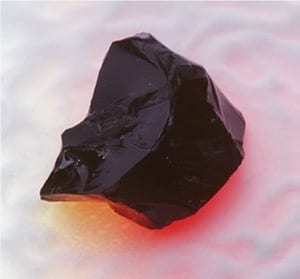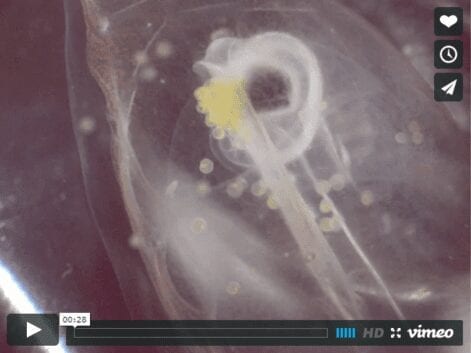
Tiny single-cell organisms discovered living underground could help with the problem of nuclear waste disposal, say researchers involved in a study at The University of Manchester.
Although bacteria with waste-eating properties have been discovered in relatively pristine soils before, this is the first time that microbes that can survive in the very harsh conditions expected in radioactive waste disposal sites have been found. The findings are published in the ISME (Multidisciplinary Journal of Microbial Ecology) journal.
The disposal of our nuclear waste is very challenging, with very large volumes destined for burial deep underground. The largest volume of radioactive waste, termed ‘intermediate level’ and comprising of 364,000m3 (enough to fill four Albert Halls), will be encased in concrete prior to disposal into underground vaults. When ground waters eventually reach these waste materials, they will react with the cement and become highly alkaline. This change drives a series of chemical reactions, triggering the breakdown of the various ‘cellulose’ based materials that are present in these complex wastes.
One such product linked to these activities, isosaccharinic acid (ISA), causes much concern as it can react with a wide range of radionuclides – unstable and toxic elements that are formed during the production of nuclear power and make up the radioactive component of nuclear waste. If the ISA binds to radionuclides, such as uranium, then the radionuclides will become far more soluble and more likely to flow out of the underground vaults to surface environments, where they could enter drinking water or the food chain. However, the researchers’ new findings indicate that microorganisms may prevent this becoming a problem.
Working on soil samples from a highly alkaline industrial site in the Peak District, which is not radioactive but does suffer from severe contamination with highly alkaline lime kiln wastes, they discovered specialist “extremophile” bacteria that thrive under the alkaline conditions expected in cement-based radioactive waste. The organisms are not only superbly adapted to live in the highly alkaline lime wastes, but they can use the ISA as a source of food and energy under conditions that mimic those expected in and around intermediate level radwaste disposal sites. For example, when there is no oxygen (a likely scenario in underground disposal vaults) to help these bacteria “breath” and break down the ISA, these simple single-cell microorganisms are able to switch their metabolism to breath using other chemicals in the water, such as nitrate or iron.
The fascinating biological processes that they use to support life under such extreme conditions are being studied by the Manchester group, as well as the stabilizing effects of these humble bacteria on radioactive waste. The ultimate aim of this work is to improve our understanding of the safe disposal of radioactive waste underground by studying the unusual diet of these hazardous waste eating microbes.
The Latest on: Hazardous waste-eating bacteria
[google_news title=”” keyword=”Hazardous waste-eating bacteria” num_posts=”10″ blurb_length=”0″ show_thumb=”left”]
via Google News
The Latest on: Hazardous waste-eating bacteria
- Carbon-Eating Bacteria May Hold The Key To Decarbonizationon May 2, 2024 at 4:00 pm
A U.S.-based biotechnology firm is using carbon-eating bacteria to turn emissions from steel mills, refineries, and other heavily polluting industrial processes into ethanol and chemicals ...
- Plastic-eating bacteria can help waste self-destructon April 30, 2024 at 11:42 am
Scientists have developed a "self-digesting plastic", which, they say, could help reduce pollution. Polyurethane is used in everything from phone cases to trainers, but is tricky to recycle and mainly ...
- Plastic-eating bacteria can help waste self-destructon April 29, 2024 at 5:00 pm
However, researchers have come up with a sci-fi like solution. By incorporating spores of plastic-eating bacteria they've developed a plastic that can self-destruct. The spores remain dormant ...
- Plastic-eating bacteria can help waste self-destructon April 29, 2024 at 5:00 pm
The type of bacteria added to the plastic is Bacillus subtilis, widely used as a food additive and a probiotic. Crucially, the bacteria has to be genetically engineered to be able to withstand the ...
- Life As We Don’t Know It: NASA Finds Arsenic-Eating Bacteriaon April 22, 2024 at 6:51 pm
PCWorld helps you navigate the PC ecosystem to find the products you want and the advice you need to get the job done.
- Recycling and Waste Newson April 22, 2024 at 4:59 pm
The major waste stream has proved both ... Apr. 26, 2024 — Chemical and heat treatment of sewage sludge can recover phosphorus in a process that could help address the problem of diminishing ...
- Flesh-Eating Bacteriaon April 11, 2024 at 4:27 pm
MICHAEL SMITH: Flesh eating, bacteria in the Gulf of Mexico? Well, it's technically not flesh, eating, and thankfully, rare. But it's still a scary story. The bacteria vibrio, vulnificus can kill ...
via Bing News










